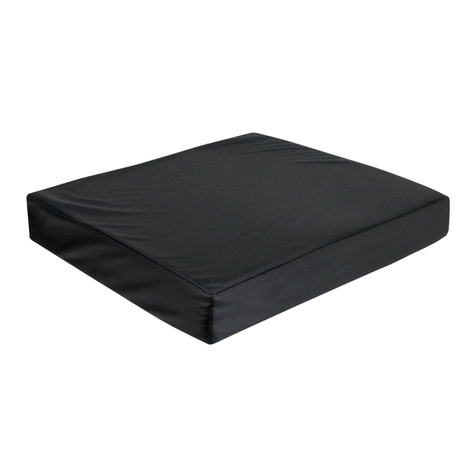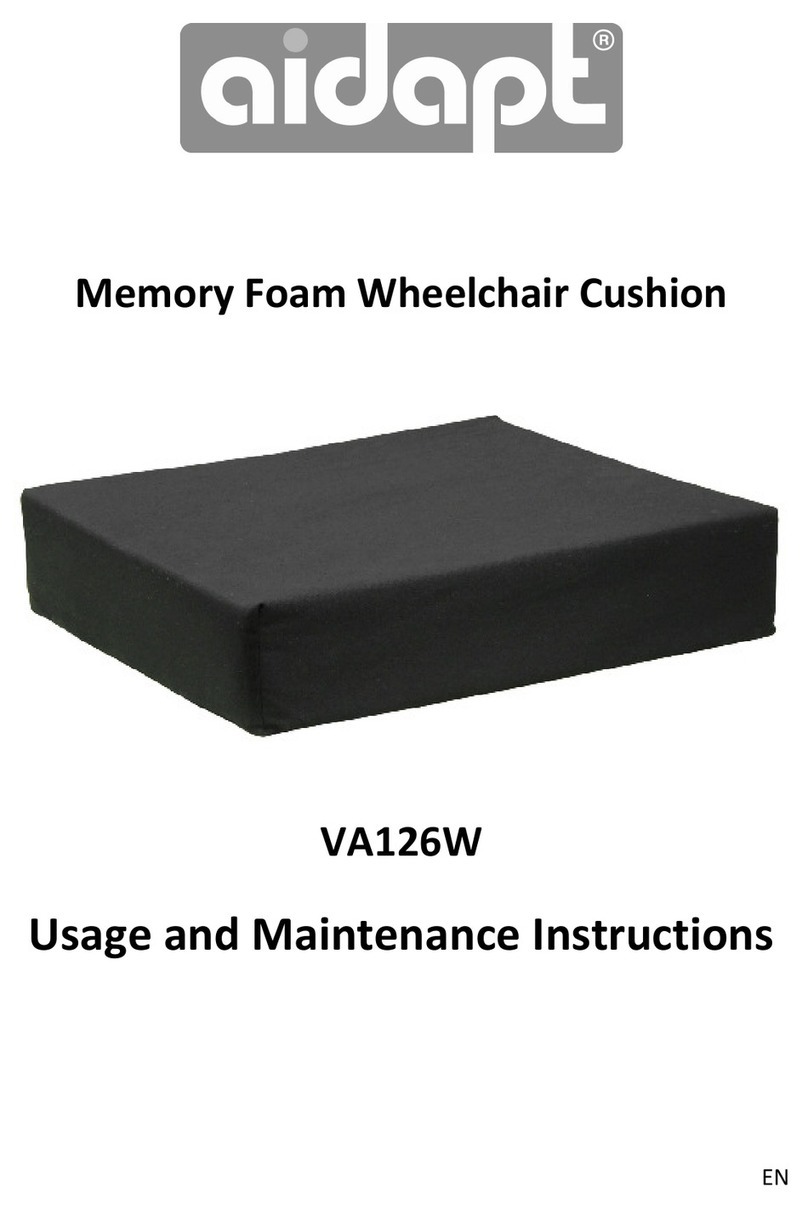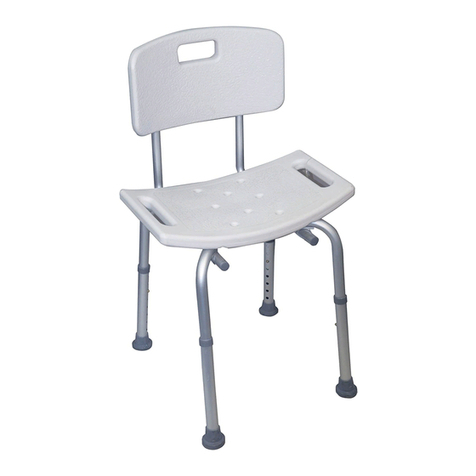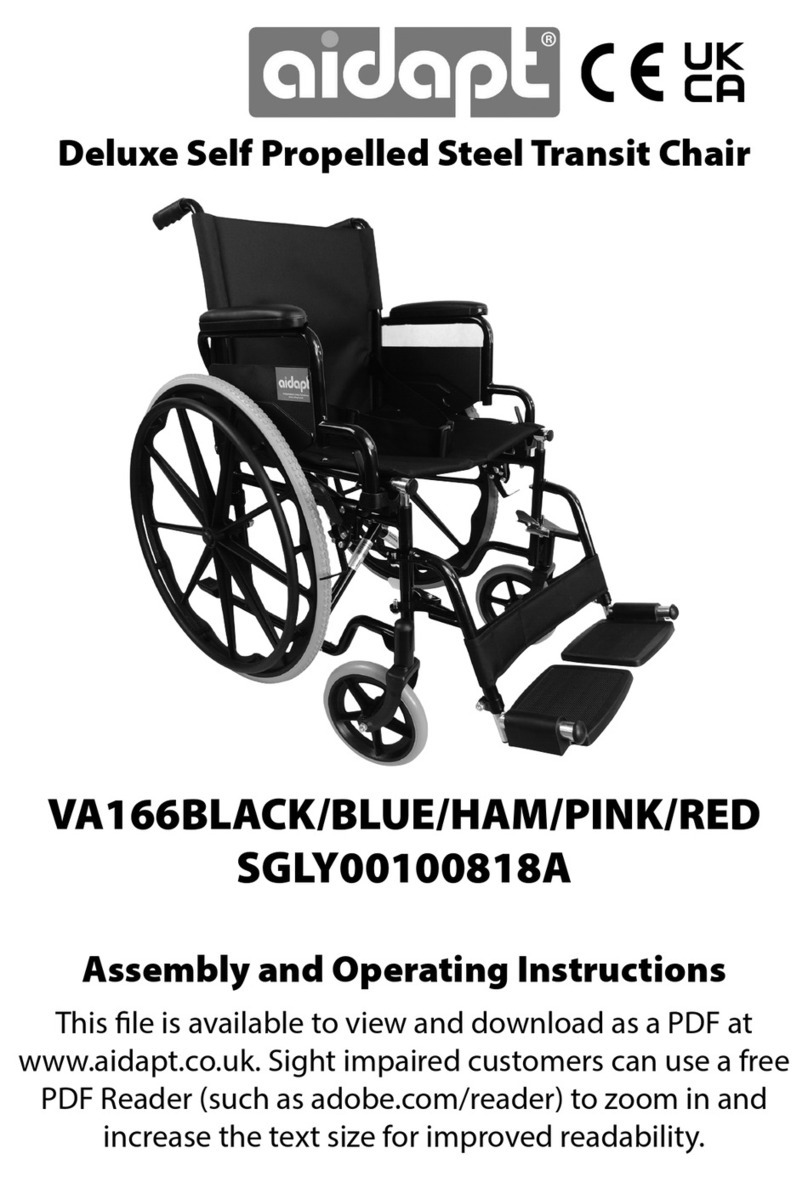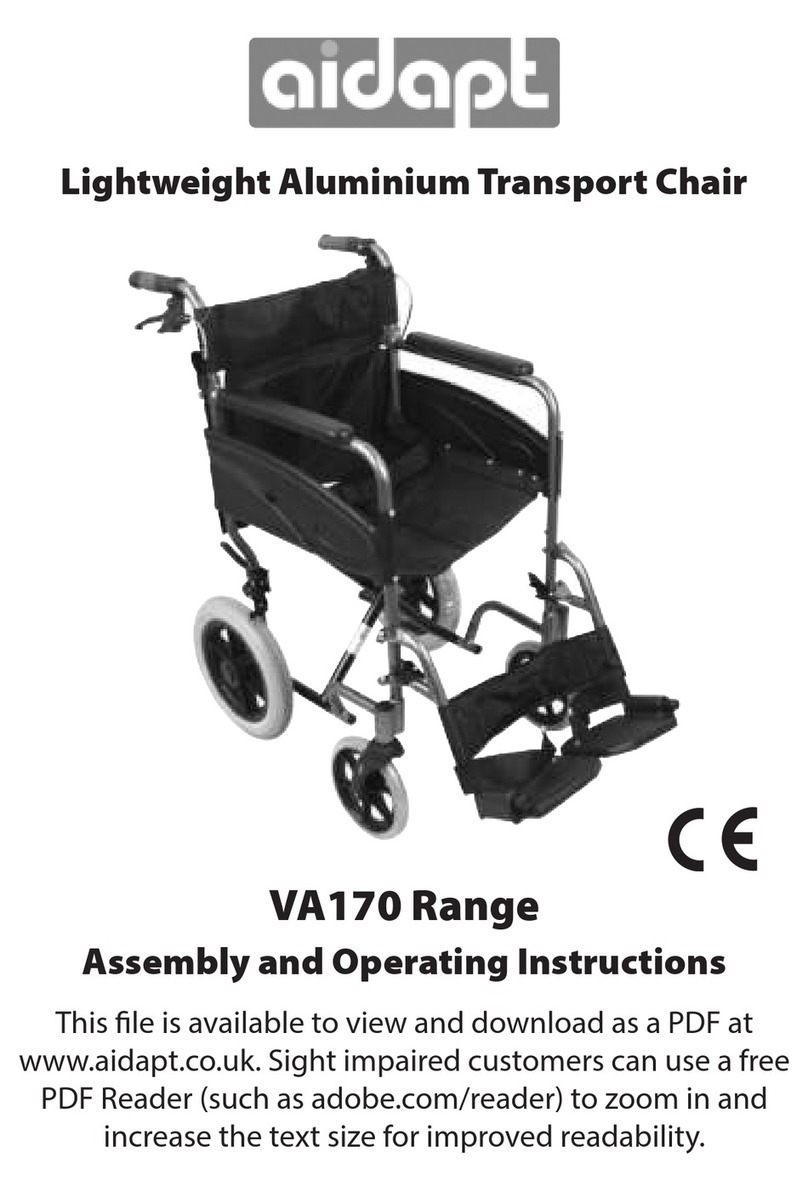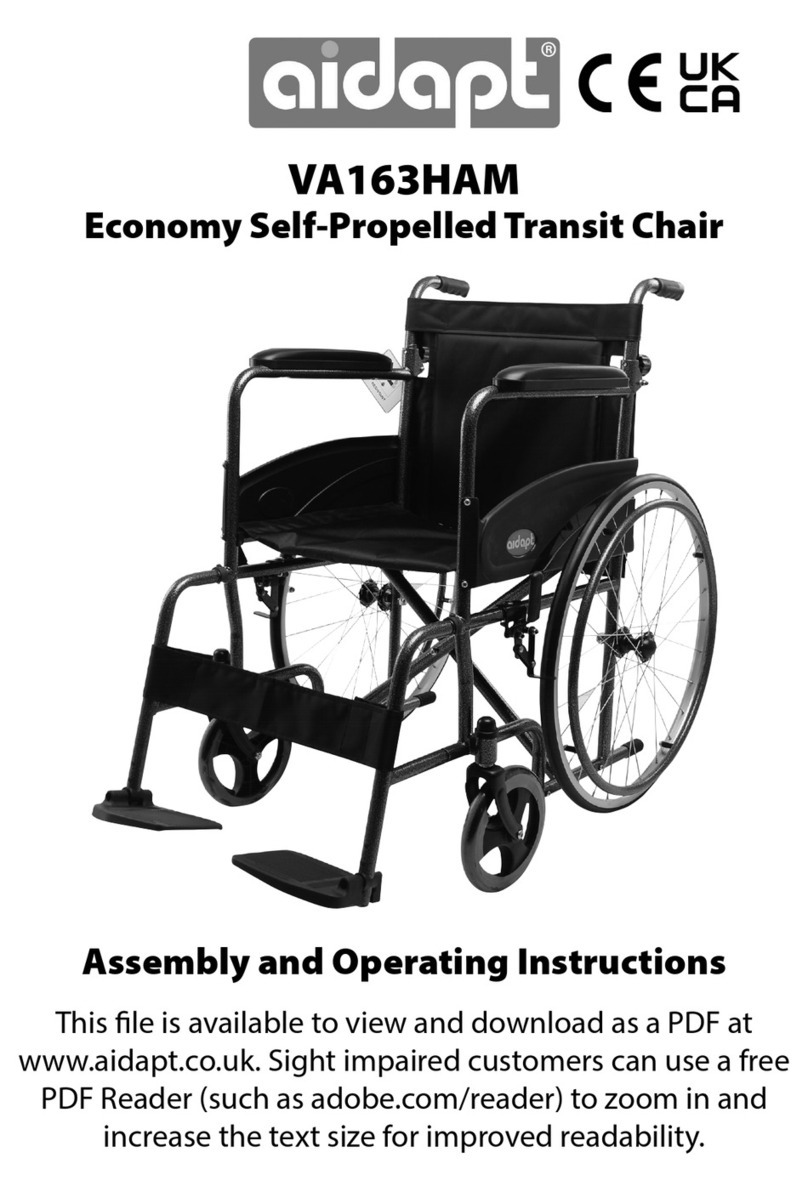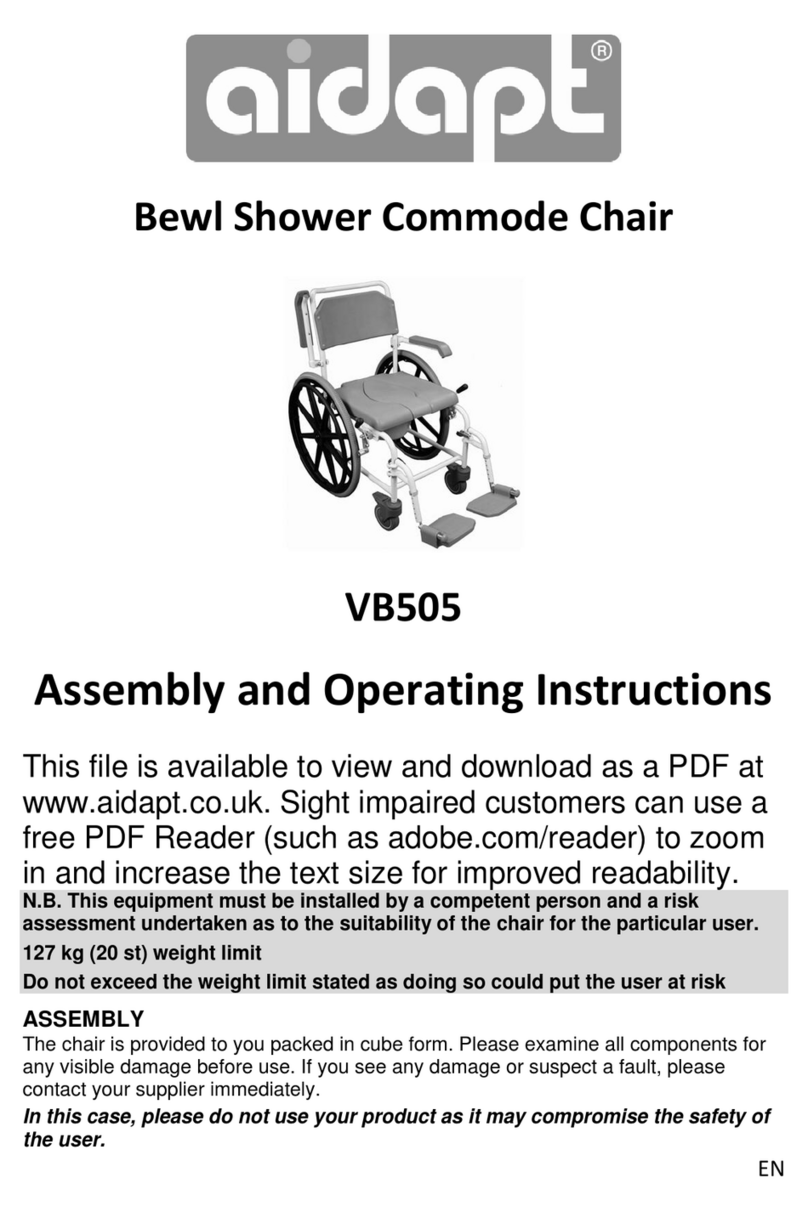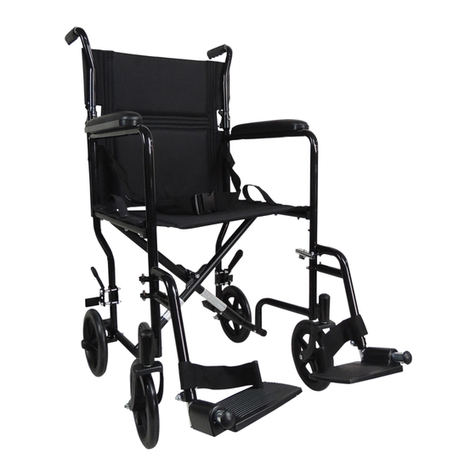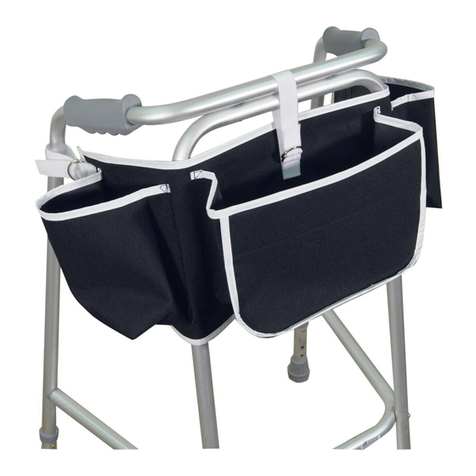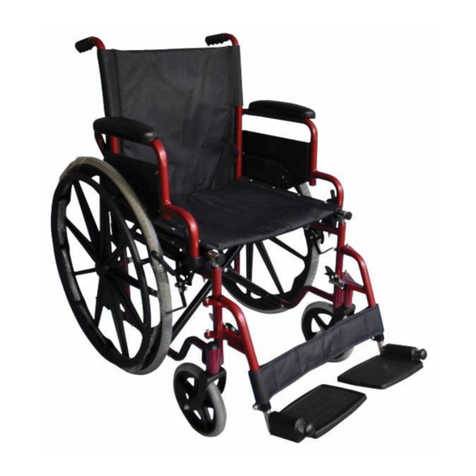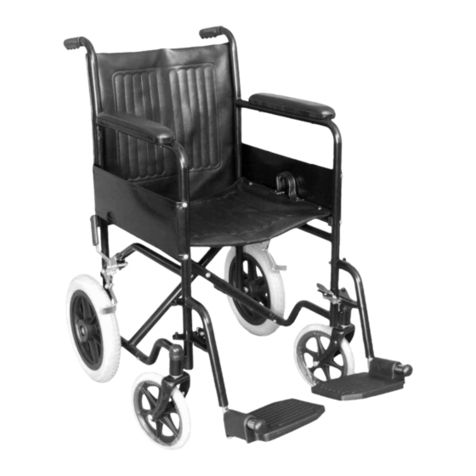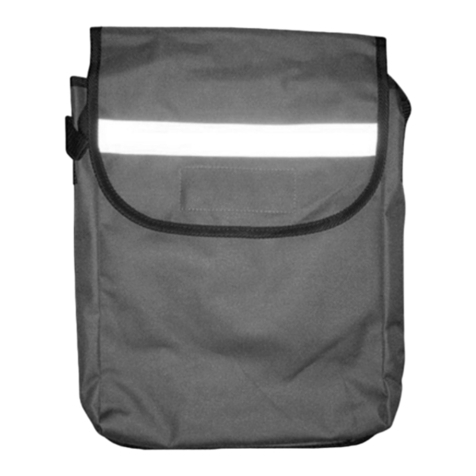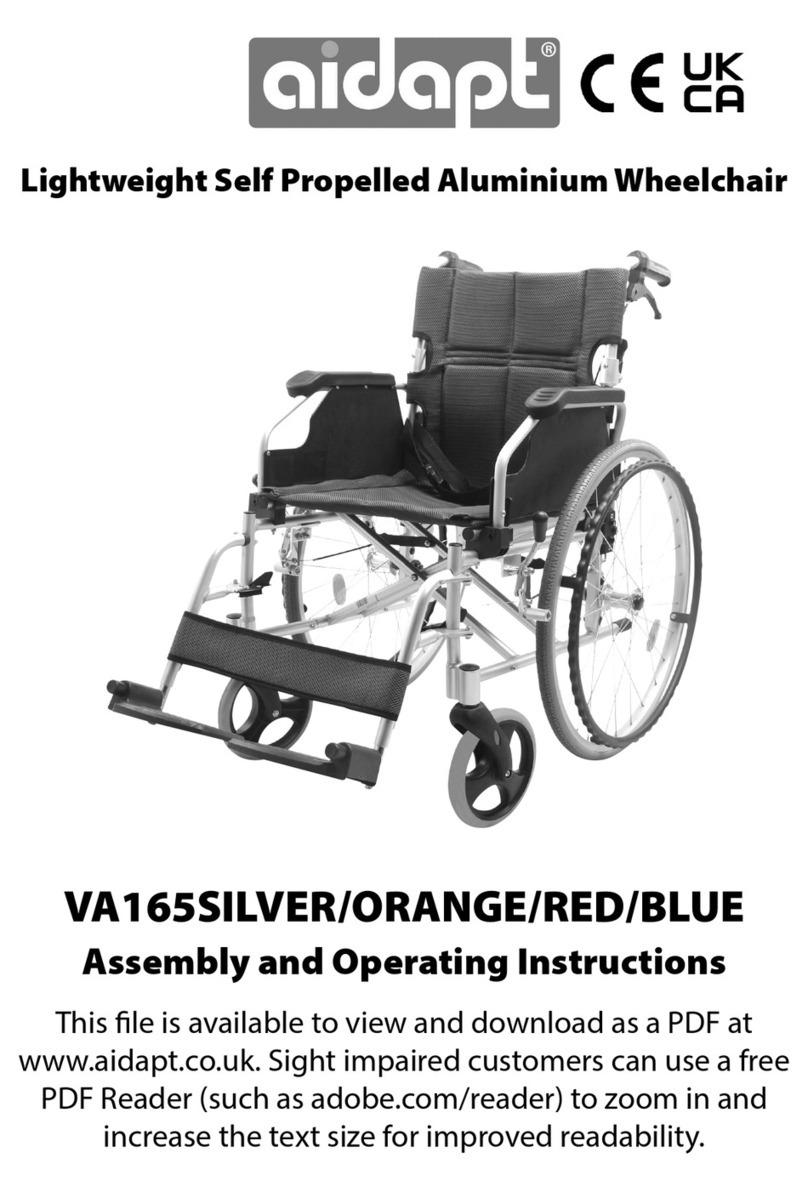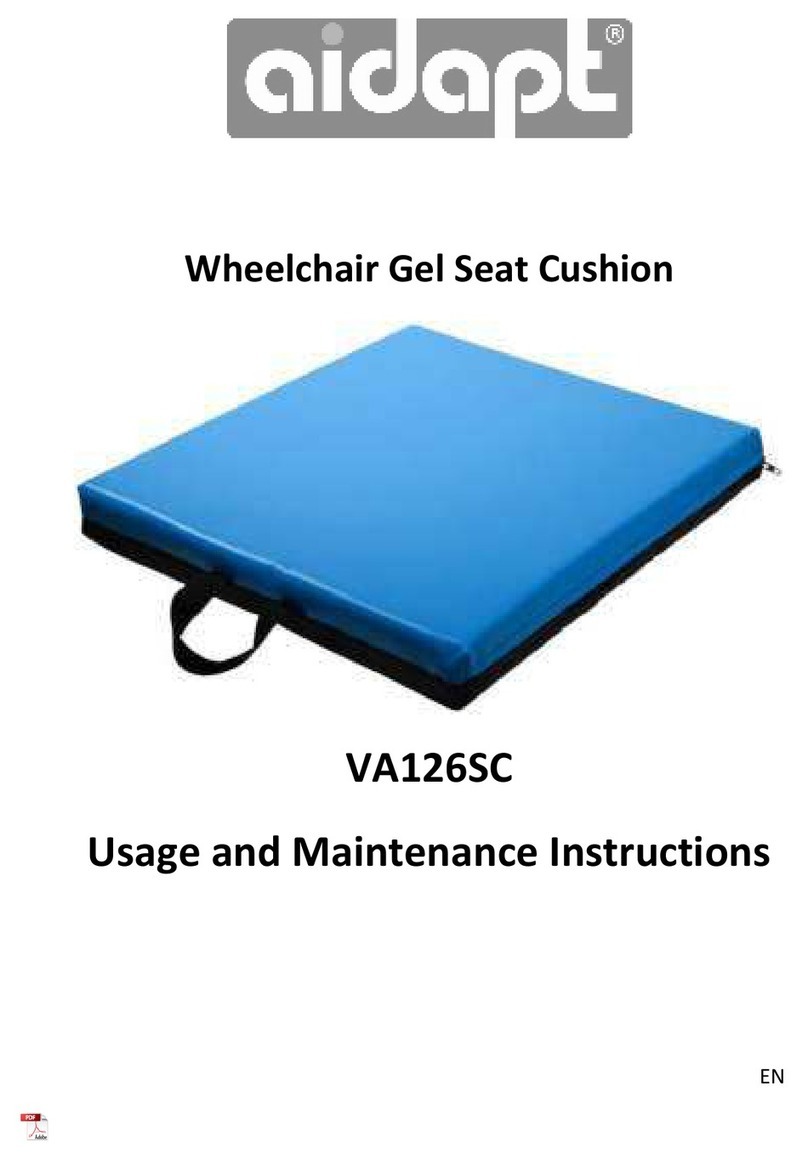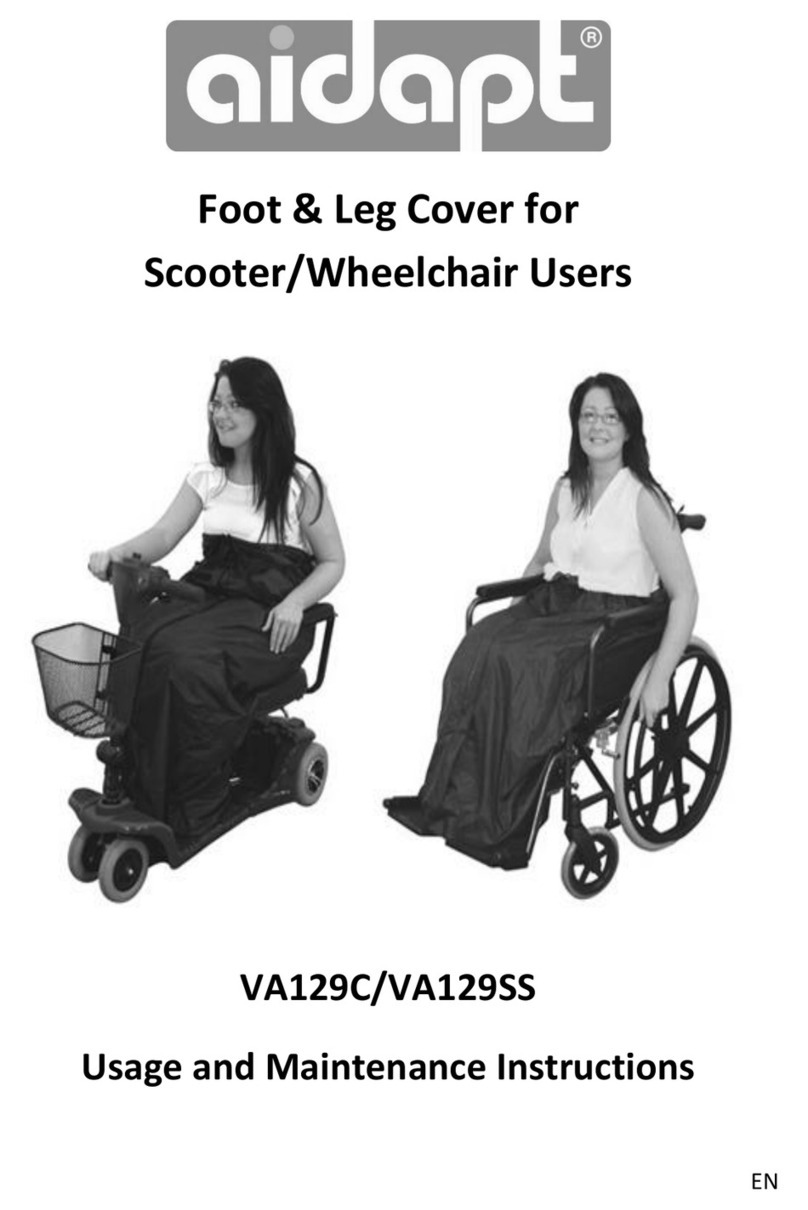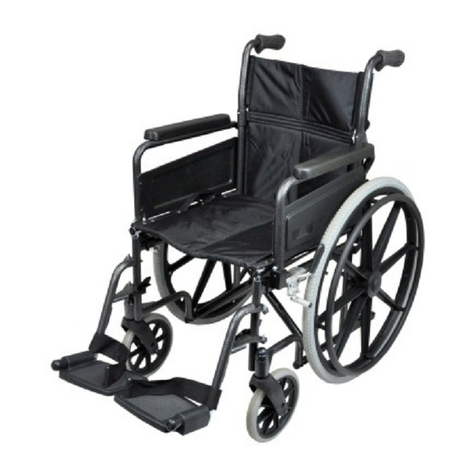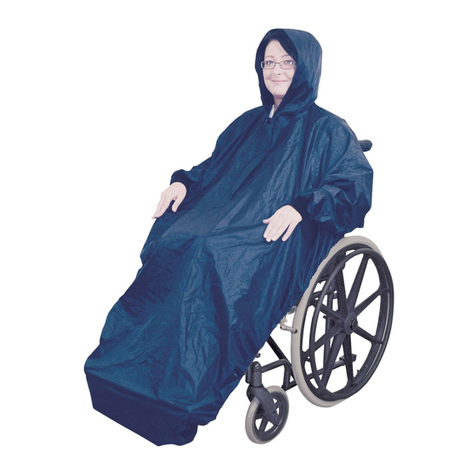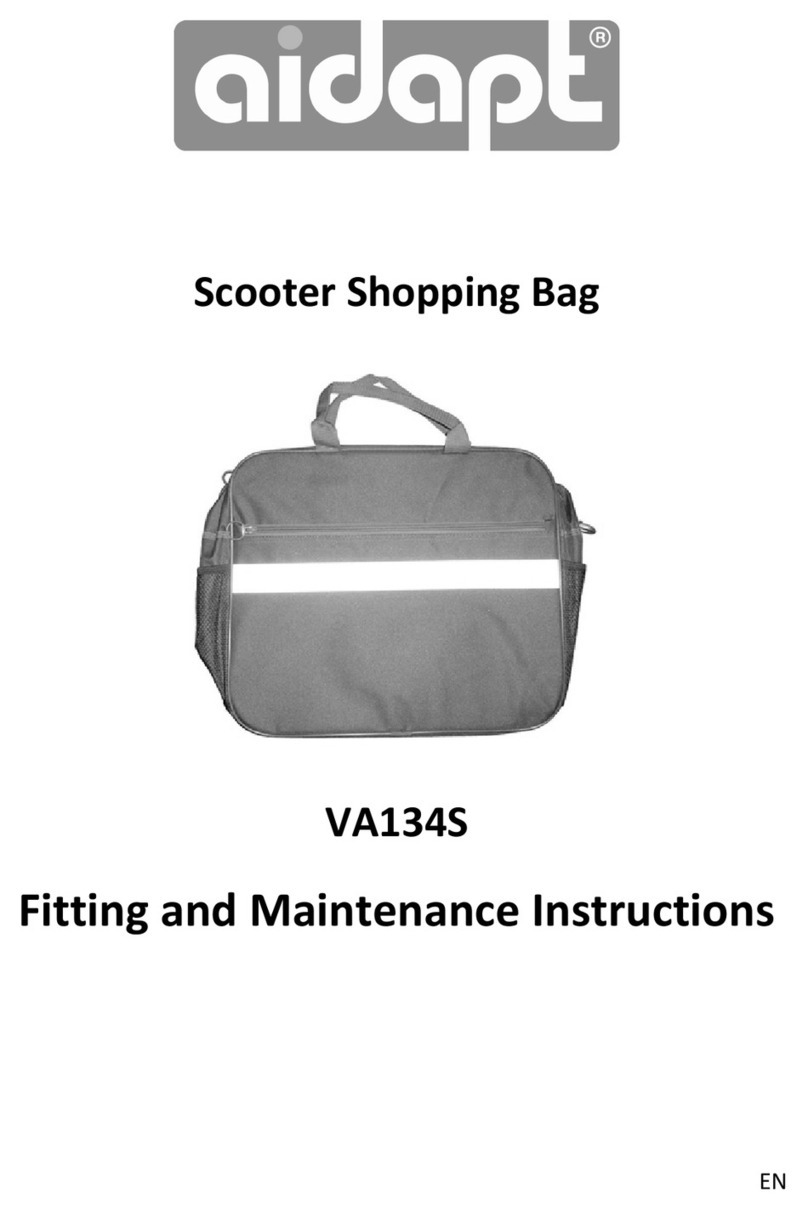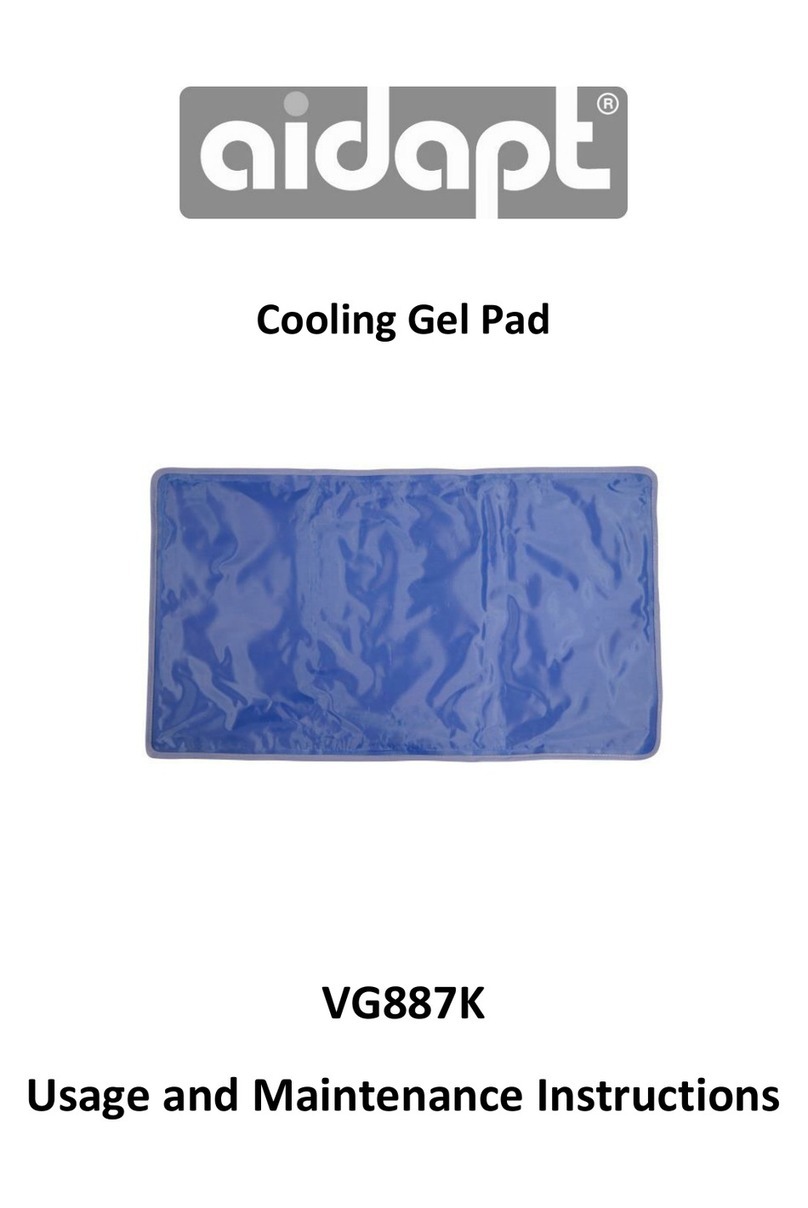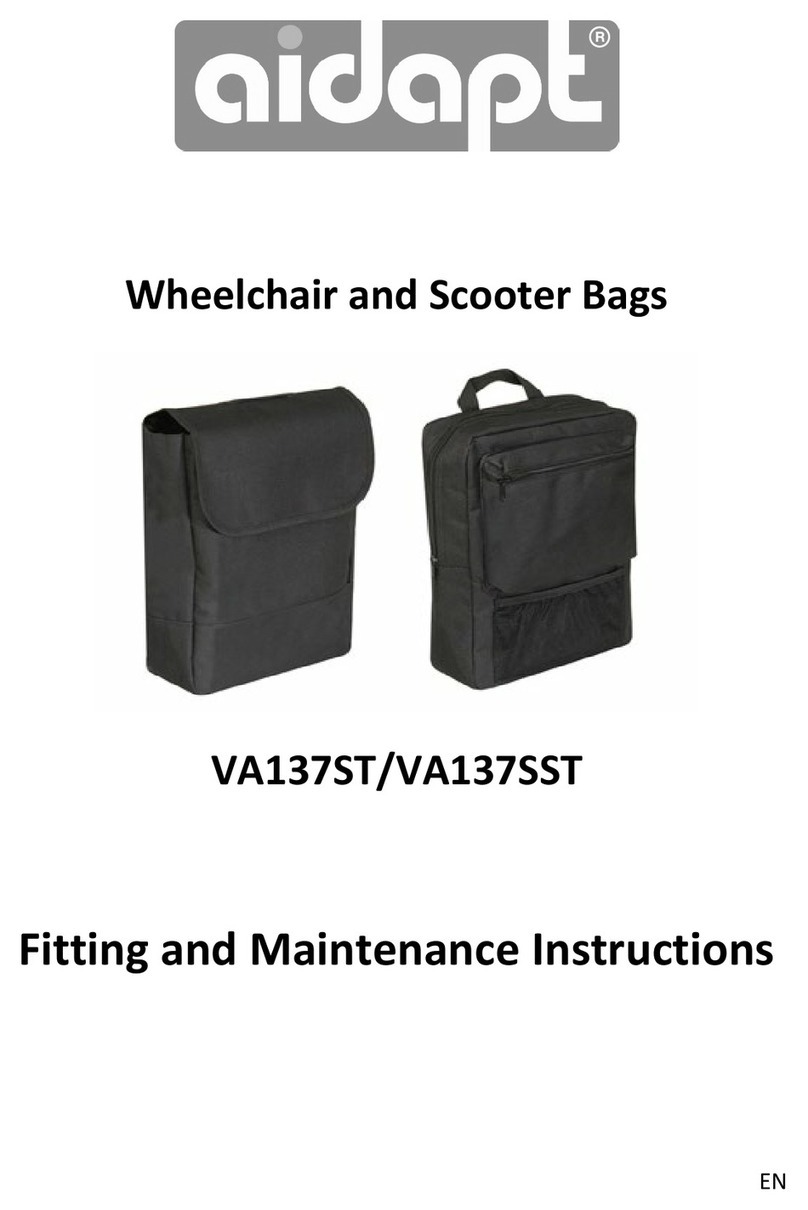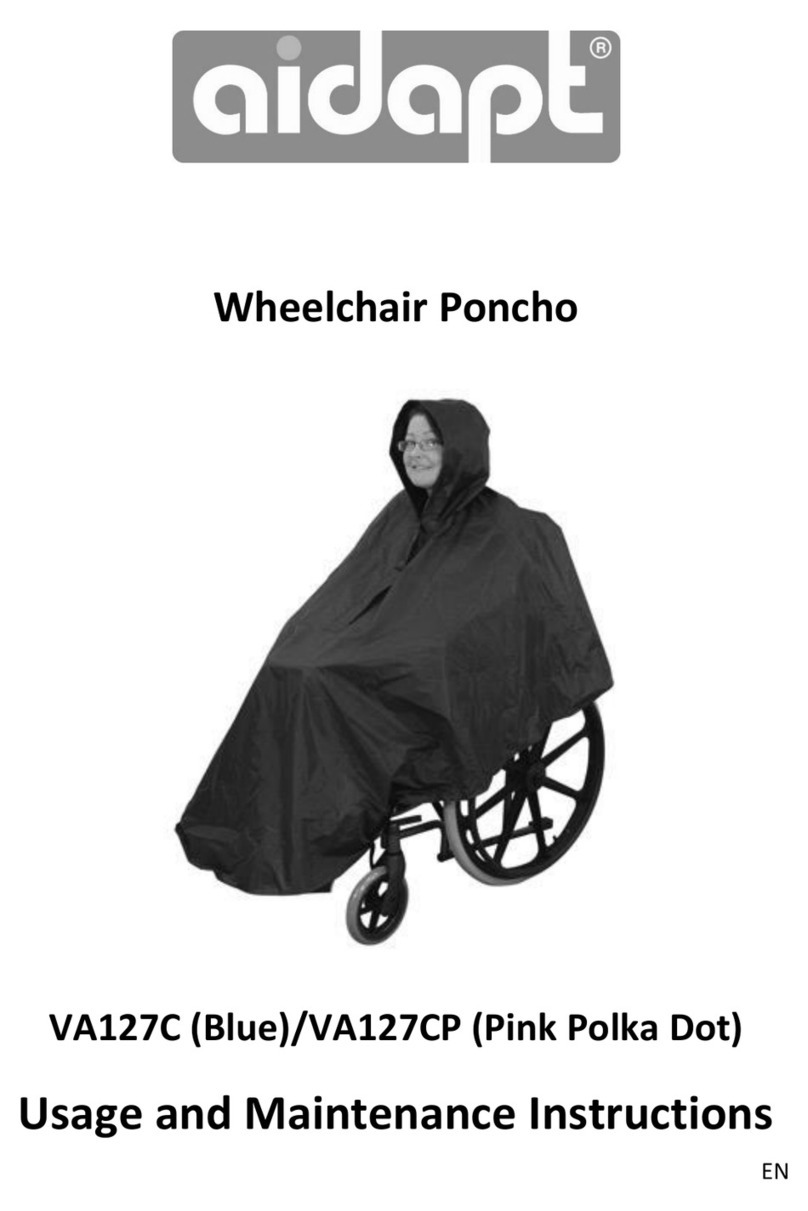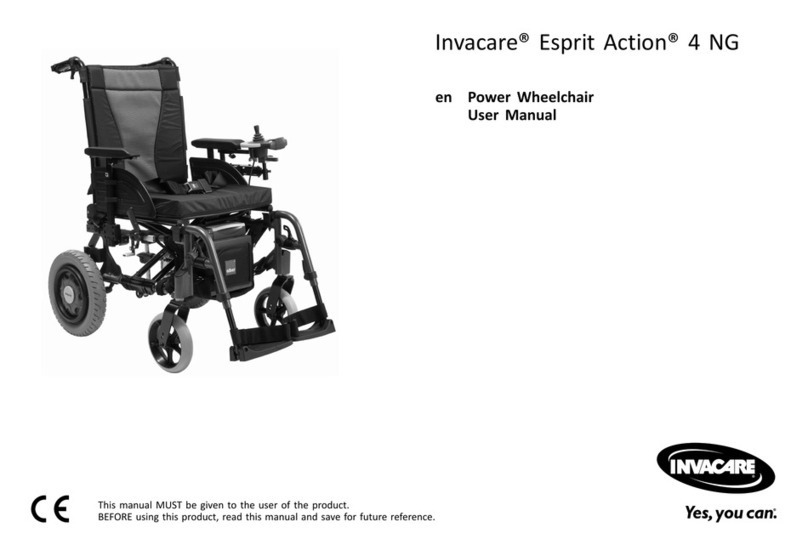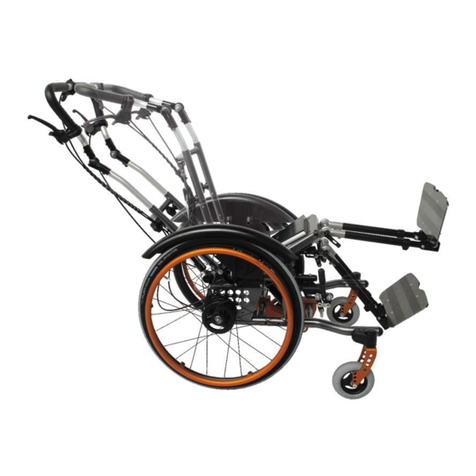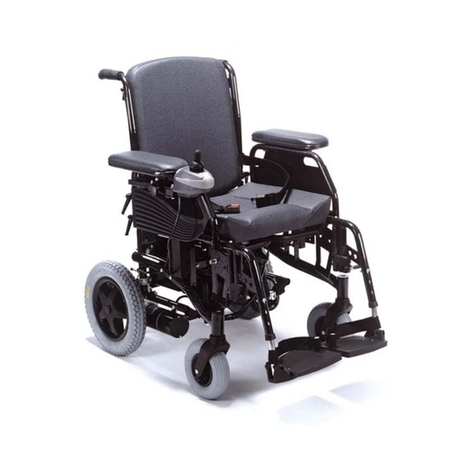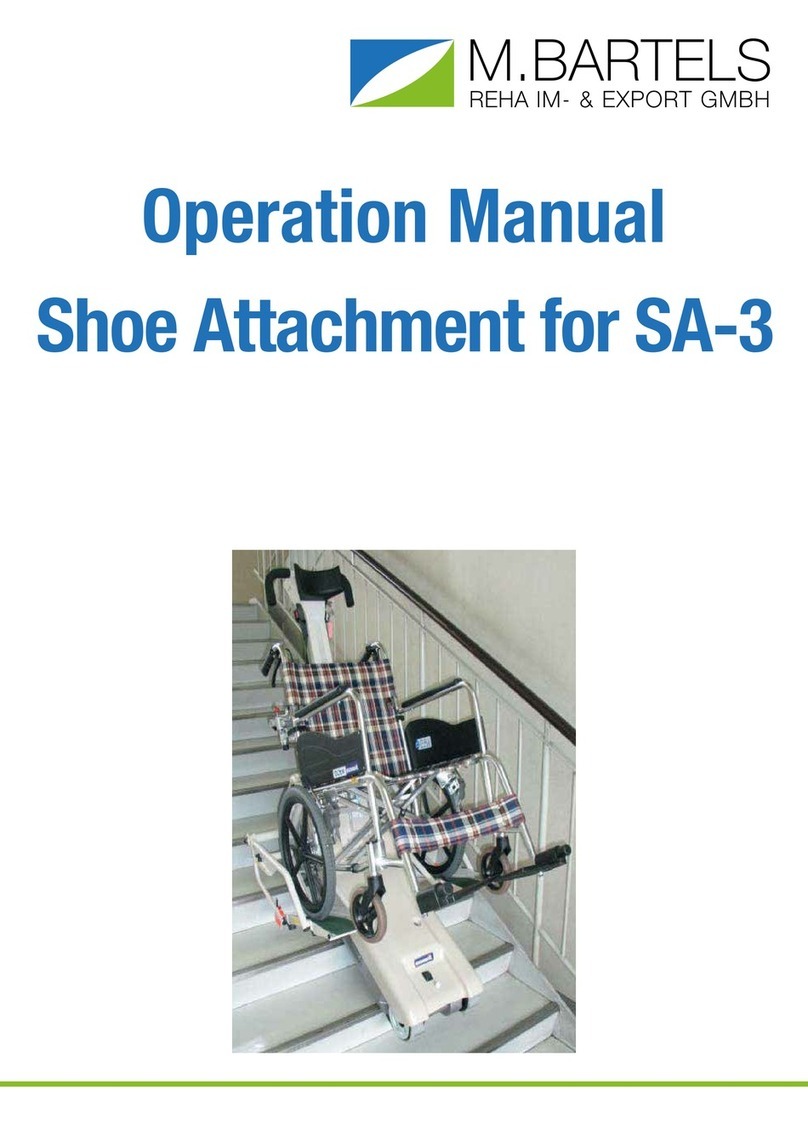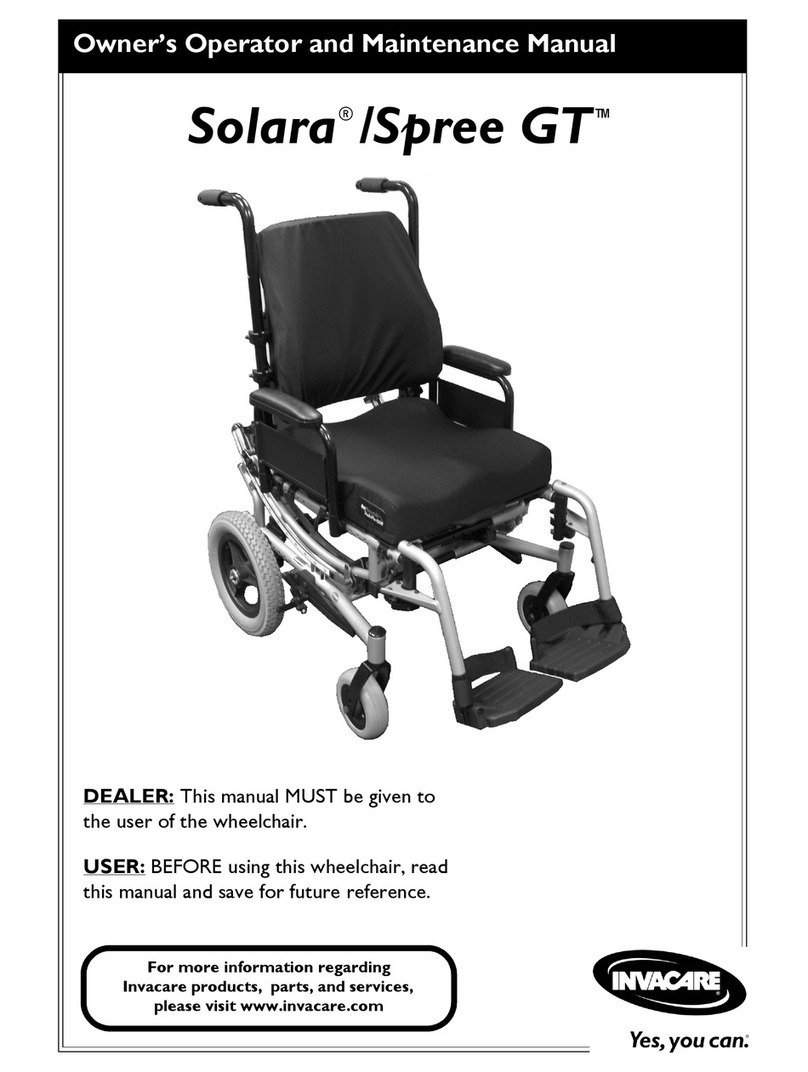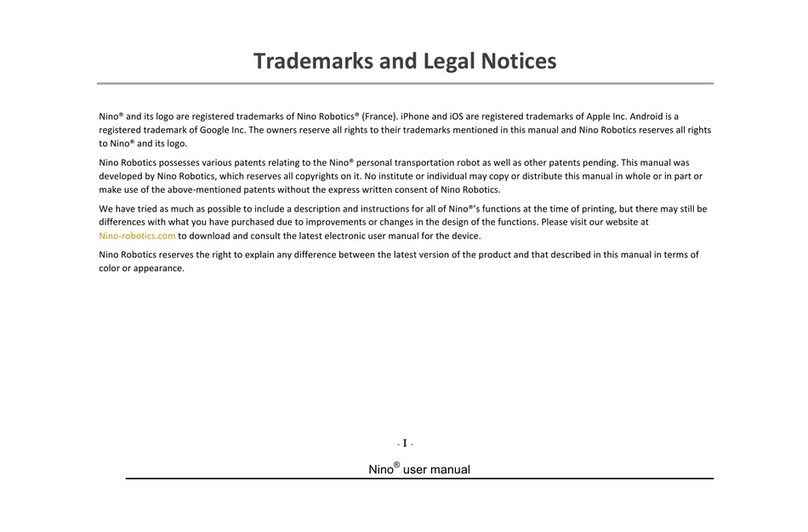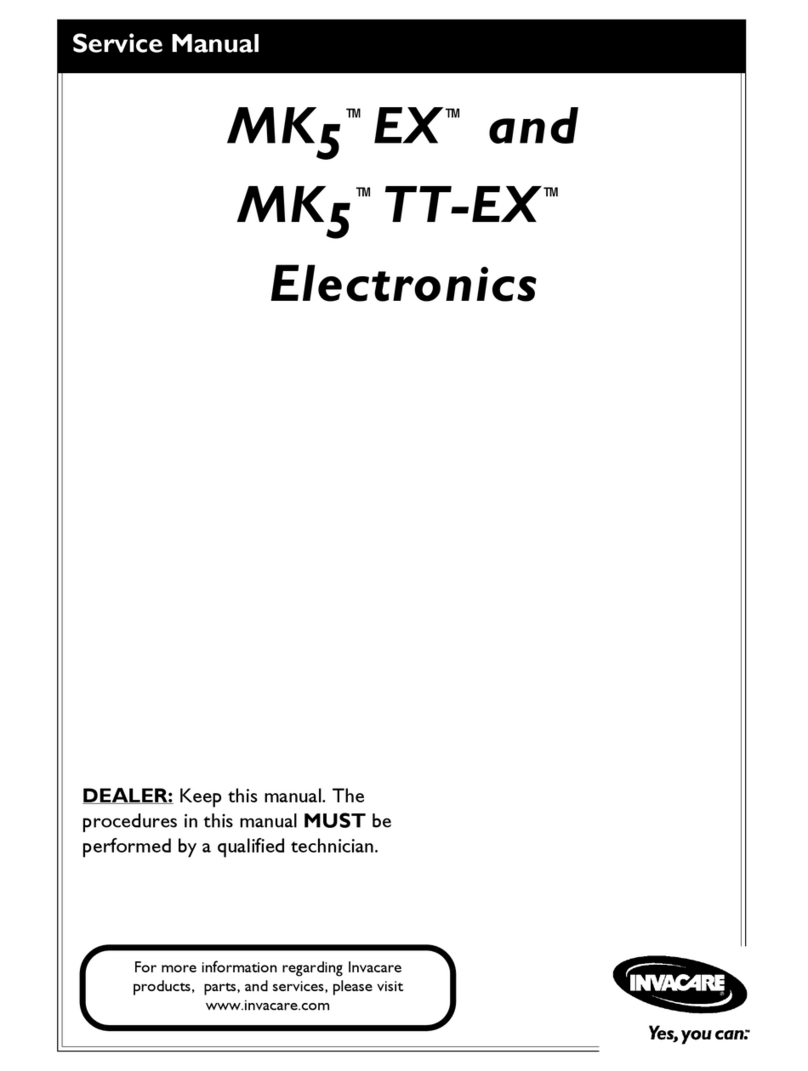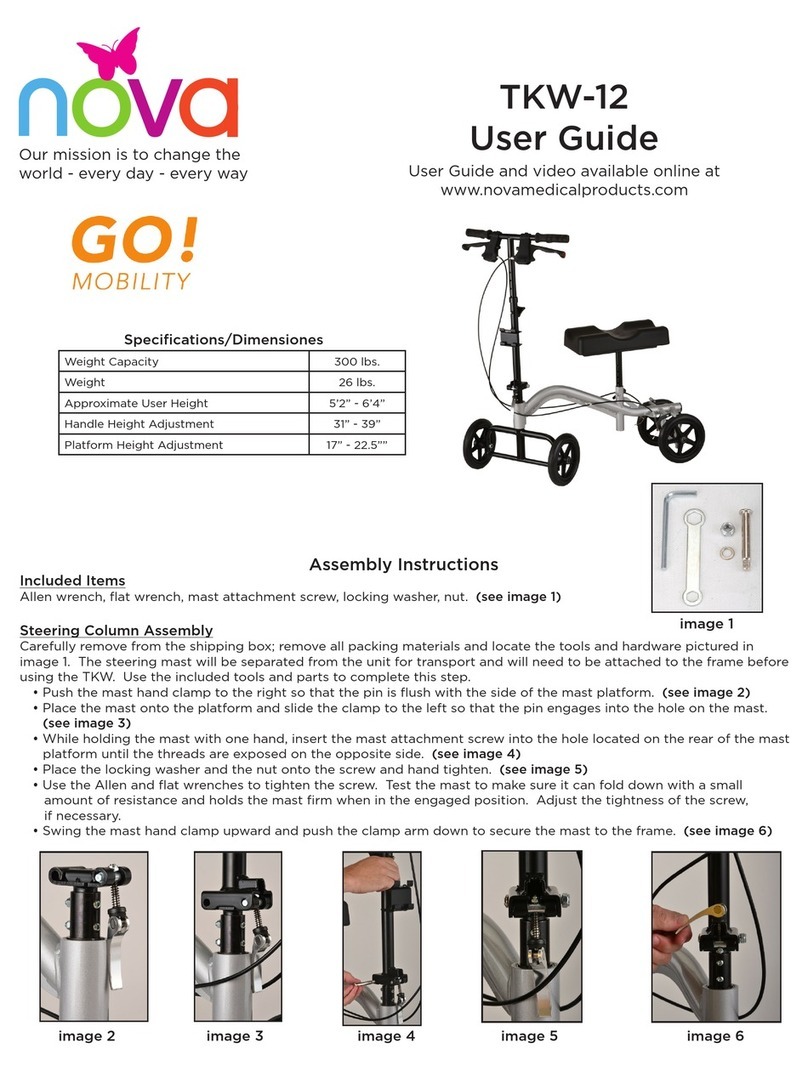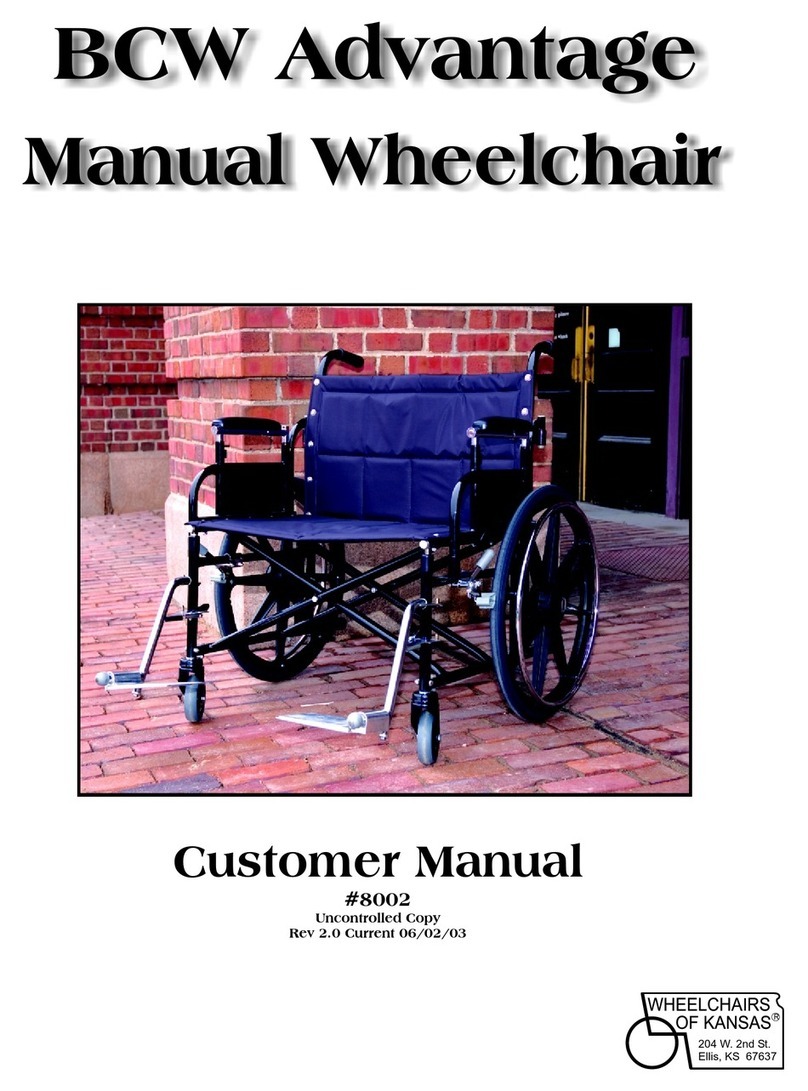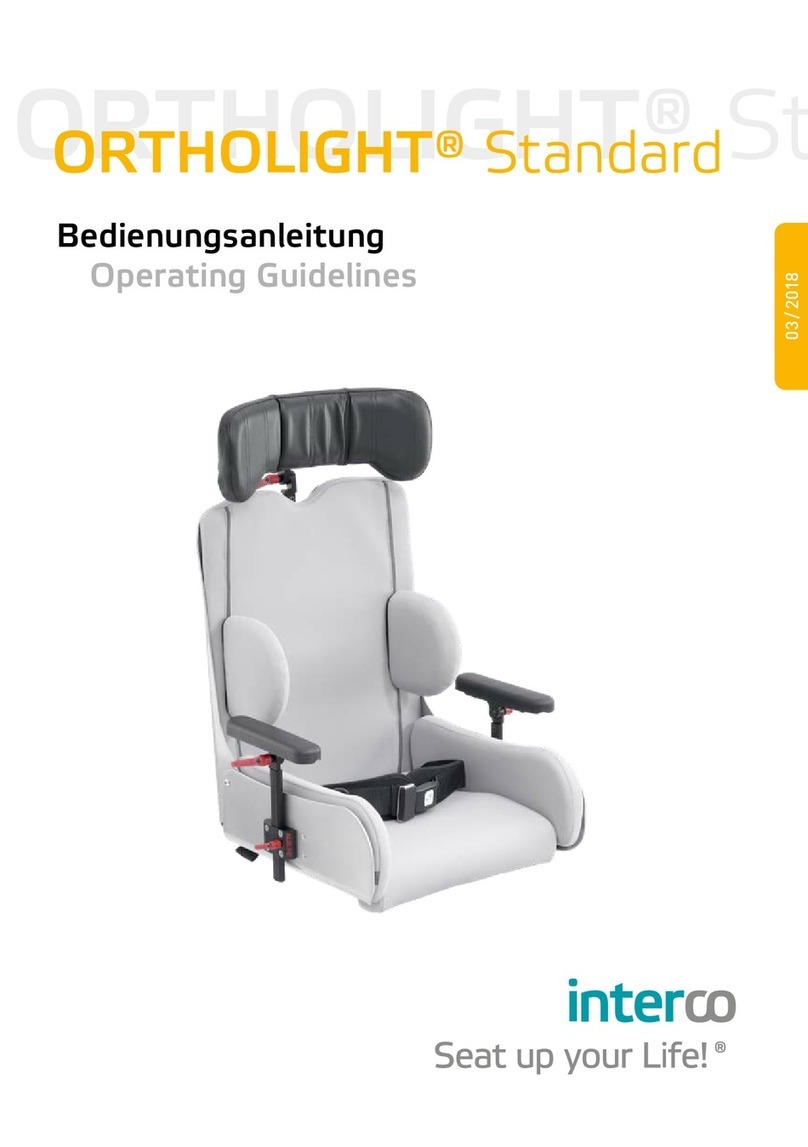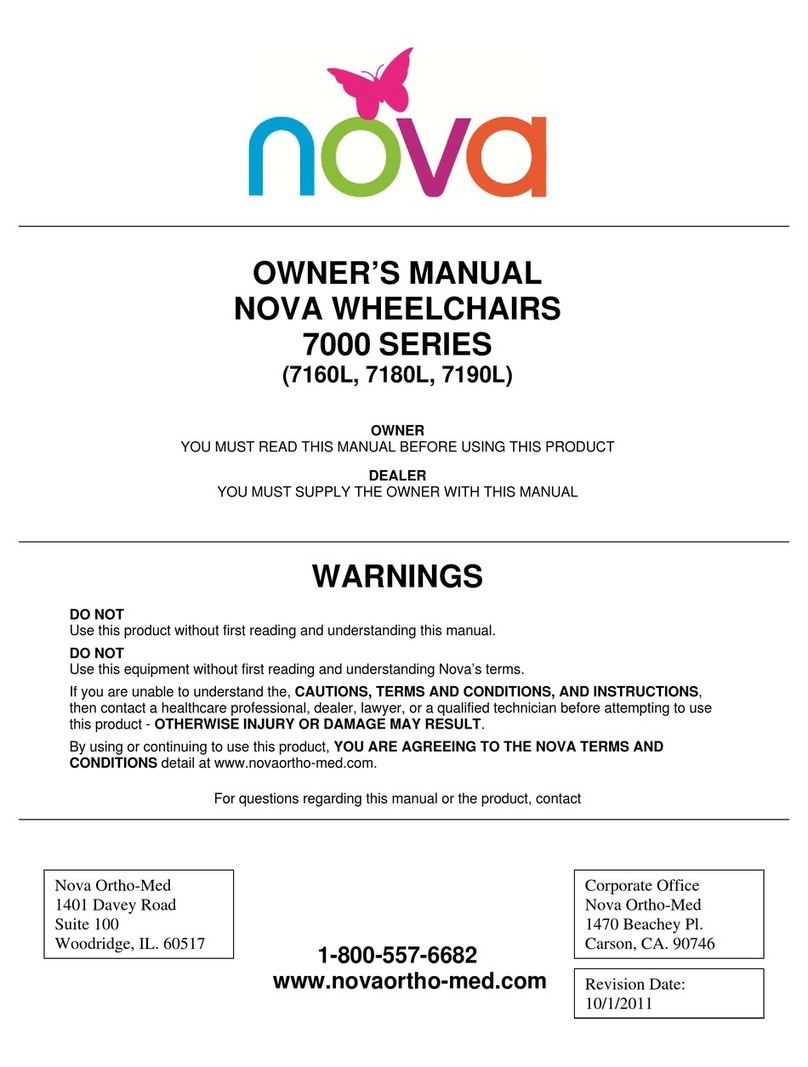
GENERAL DESCRIPTION ctd.
1. Backrest
The adjustable backrest can be folded down by means of a locking mechanism tted to
both sides of the lower part of the backrest pillars. To fold the backrest down, push on
both of the black plastic levers, then pull back and down on the top part of the backrest.
To return to the original, reverse the procedure, making sure the mechanisms are locked
securely. You will hear a click when the backrest is locked back into position correctly.
2. Handles
The handles are designed for the helper to propel the transit chair and to
stop the transit chair with the hand brakes. They must not be used solely for lifting the
transit chair over obstructions or kerbs (see negotiating obstacles).
3. Armrest
PU pads are xed onto the armrest for comfort and can be replaced as spare parts.
4. Footplates
The footplates are intended as a foot support only when you are sitting in the transit chair.
On no account should you stand on the footplates. The calf straps (if tted) can be used
to secure the position of the feet. The footplate assemblies can be adjusted in height by
loosening the nut of the base of the adjustment tube, positioning the plate at the required
height and tightening the nut to secure the assembly. The footplate supports cannot be
adjusted but are moveable from the transit chair. They can be swung away to the outside of
the transit chair. To carry out this procedure, press the release lever and swing the support
to the outside of the transit chair. If the support is to be removed, lift it upwards. To re-t
and return to the original position, reverse the above procedure
5. Castor and bearing
The front wheels have solid puncture proof tyres. These should be checked at regular
intervals to monitor any wear. Transit chairs become dicult to steer and propel when
surfaces have worn at. It is recommended that both front tyres are replaced at the same
time to avoid one side of the transit chair from being higher than the other.
The front wheels are secured to the castor fork by an axle bolt and axle nut. Periodically,
this bolt and nut should be checked and tightened if necessary to allow a snug but free
spinning t. The castor fork swivel allows the transit chair to be steered. An adjustment
locknut is located under the castor cap. If the locknut is too tight, the transit chair will be
dicult to steer.
8
